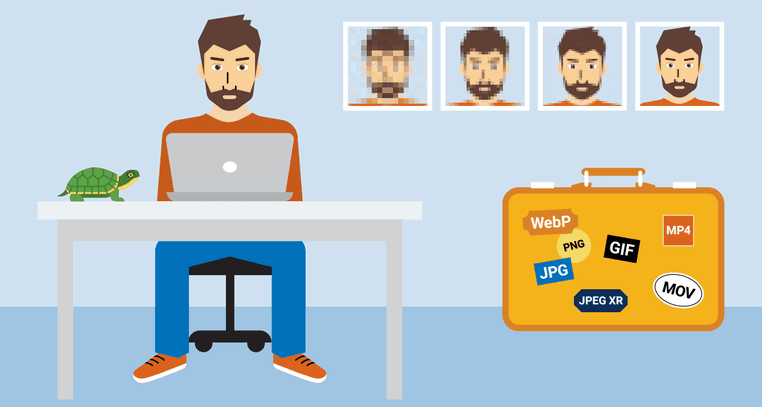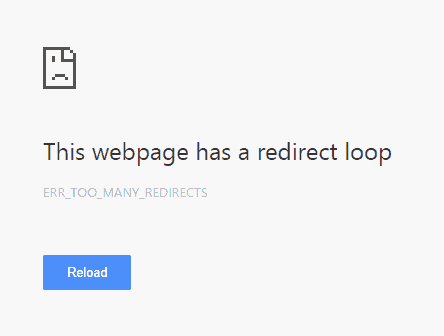While developing a WordPress theme or plugin is a task in itself, a bigger challenge arises after that. Selling your product. You might have made the best and most useful WordPress plugin in the world, with slow website loading times, it won’t sell.
Really? Is it that important? The answer is yes. You wouldn’t even know, and slow loading speeds will keep killing your conversions. The best way out is making a list of issues and fixing them all picking one at a time.
What makes speed so crucial?
I can say this a hundred thousand times.
“The creed of internet users is one of the impatient individuals.”
An average internet user takes around 50 milliseconds to form an opinion about a website. This opinion decides if the user will stay or bounce. How well do you think a website loading in 10-12 seconds will hold that user’s attention? How well do you think your website would perform in such a case? Well, may the answer be negative or in your favor, there’s a lot you can do to improve this.
But before we get into that, it is important to know how a slow loading website inhibits your plugins and themes sales. For that, here is a small list of problems that a slow website will cause.
A website that is hard to load is hard to access
This is obvious.
We’ve all tried loading a heavy website on a slow internet connection. You know how it feels, right? To be blunt, it kills the vibe. You jump from page to page to find the content, and every page takes ages to load. What are the odds of you coming back to that site?
Every internet user thinks the same way. And when your audience includes WordPress users from across the globe, you can guess how important it will be to work on user experience.
Some elements might not completely load
Have you ever come across half loaded pages? Or pages with images that just refuse to load? This is as bad as it gets.
A website with heavy elements like too much flash animation, self-hosted videos, big splash images take longer to load and might not even load completely.
This will result in your users not being able to view your whole content and if your content isn’t even visible to the users, then what’s the point of having it in the first place.
Poor search rankings
A 2016 study by Backlinko concluded that “pages on fast-loading sites rank significantly higher than pages on slow-loading sites.”
And it doesn’t end there.
What’s worse is that your site speed can cause it to be penalized by the search algorithms that determine which pages show where on the search engine results page (SERP). Can you afford that? Nobody can and so it’s important to work on your site’s performance. A slow website isn’t just hard to access for humans, but for the search engine crawlers too.
It deteriorates brand reputation
Your site represents your brand in the online space. A poorly designed website that takes ages to load will turn most of your users off. Result? Poor conversion rates and a bad reputation.
Around 44% of web shoppers having trouble with a website’s performance would tell a friend about it. That is how a slow loading website doesn’t only directly inhibit your business growth but also leaves a bad influence on your users and their contacts. This with no doubts is unhealthy for your brand’s reputation.
Also, an almost equal proportion of users expect a web page to load in 2 seconds or less. It means that your incredibly amazeballs plugin or theme with WordPress portfolio templates will lose conversions and sales if your webpage isn’t fast enough. So, get on it and go through the below-mentioned tips to optimize your website for performance.
But how to optimize a website’s performance and load times?
That’s the big question. To any issue, there are causes. Same is the case with website performance. A website can be slow for a few reasons. In the sections below, we discuss those reasons and how to fix the issues caused by them
Extra Large Images
If you’ve been using the internet for more than eight years, you might know about Dial-up connections. Remember how surfing with that used to be?
An average sized image could take up to a minute to load completely. Since broadband became mainstream, these issues aren’t that frequent. Talking of the process, it’s still the same. After you ping the server, it starts carrying each bit of the website to your browser screen. The server carries content, text, and images. This is like a shopkeeper bringing your stock out of the back. Bigger the stock more will be the amount of time elapsed.
How to fix this?
The best and the easiest way to fixing this is using image optimization tools like optimizilla. This will reduce the image size. Using smaller images on your website will directly boost up your loading speeds.
Apart from that, file format also plays a major role while loading times are considered. Our everyday browsers can quickly load up JPEGs, PNGs and even GIFS. Talking of heavier image formats like TIFF and BMP, it’s going to take some time.
Tip: If your website is made on WordPress, you’d know many plugins optimize images at the time of upload. They are effective. However, these plugins might rename your images due to which you might lose alt tags. So choose wisely.
High code density
Every website in the world is constructed with code. Facebook alone consists of 60 million lines of codes. This is more than the Hadron Collider. As a plugin and themes’ developer, you know how it works. If the backend of your website is brimmed up with extra codes, it’s going to perform poorly in browsers.
How to fix this?
It is simple. Clean up your code.
No doubt, your website might be well thought through. But do you think there is any clutter? Are there any extra lines of code? Do you think your code can be optimized further? Well, that is the sole purpose. To optimize the most. Think about it. Find out the code which is not adding enough value to your website. And take the required action.
Text graphics aren’t always the best idea
“Really? What are you saying? How can you go against graphics?” Well, the subheading might have brought a few or all of these questions to crop up. But before you conclude, stay with me here!
Visual content is one great way of boosting user engagement. We all know it. But are all of your images adding value to your website? There still are websites that use heavy images in place of text.
Examples include the use of images for labeling the navigation menu. Now, this is something that can be finely refined. These small images add up to form a greater pile of bites required to be loaded for your webpage to load fully.
How to fix this?
Look around your website and take note of unnecessary images with textual information.
Next step?
Just replace these unnecessary images with written text. Content in the form of text loads way faster than visual content.
Note: This no way means that you should refrain from using visual content. It interacts better with users. In fact, posts with images get 650 percent better engagement than text-only posts. It’s just that unnecessary images look better when not on your website’s page.
Too many redirections
http:// > http://www. > https://www.
Can you recognize the above text? Well, sure you can. It’s a simple redirection path for any website which has been redirected from one protocol to another. While it is important to have an SSL certificate for your website, distributing other versions of your site like www.xyz.com/ or http://www.xyz.com/ or http://xyz.com/ which redirect to each other or your website’s final (https://xyz.com/) version is a really bad idea.
What it does is increase the number of redirects. As the website requires to be redirected from one domain (or protocol) to other, it has to send more requests. This takes time. No wonder this reduces your website speed and increases website loading times.
How to fix this?
Although, I just mentioned one sweet fix already. For those who missed it here is the solution:
One fine way of fixing this too many redirects issue is reducing the number of redirects for your users. This doesn’t mean that you need to reduce redirects to your website. This is something you should never indulge in without consulting digital marketing professionals.
What you can do is distribute your website’s content with the final redirected URL. For example, if your website finally loads to https://xyz.com/, don’t share content with http://xyz.com. This will reduce the number of redirects for your users resulting the website to load quicker.
Poorly managed video content
Videos are great for boosting user engagement and inflicting user interaction. In fact, campaigns using video for content marketing grow revenue 49% faster than those running without a video.
But does this mean that these can’t inhibit conversions? Well, if you don’t manage your video content properly, they sure can. We all know that videos hosted on your site will make your website slower than normal.
Result?
Slow loading times > Poor website performance > Poor search rankings > Poor conversion rates and the series goes on.
So, what can be done for this? Let us find out.
How to fix this?
Hands down, the best fix for this issue is uploading videos to YouTube and then embedding those into your website’s content. This will just add a line of YouTube’s embed code to your page.
For those who strictly want the video on their own server, using a Content Distribution Network (CDN) will be a good alternative.
And if there are doubts about how to set it up, this piece might help.
Final words
Website speed is a great concern for all internet marketers. This is something developers need to consider while building the website. However, if you missed out in the first go, the tips above will still help you fix it all up.
Just remember that your users care about the product quality and their experience on a particular website. As there are one but many alternatives to all forms of content on the web, to steal the deal, you need to work on all factors that a user or search engine would consider. Talking of website speed, it is one of the most important considerable factors.





